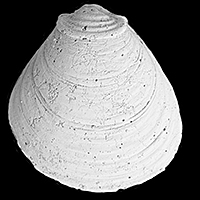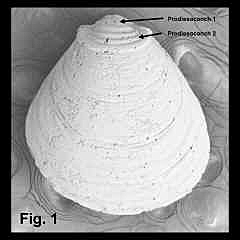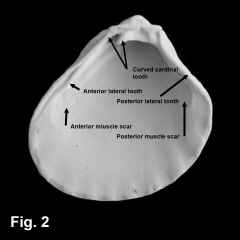|
< Previous family introduction |
|
|
|
Family Condylocardiidae Little Carditas
|
|
The Condylocardiide is a family of minute bivalves, generally less than 4 mm in size, and in NSW, less than 2 mm. According to Huber (2010) there is probably more than 150 species worldwide, with greatest diversity in Australia and New Zealand. Their habitat is unclear. It has been suggested that they burrow shallowly into soft sediments on shallow water sand flats, but searching by the author is such situations has been unproductive. Middelfart (2002) reported Condylocardia pectinata from a wide depth range of 6-750 m depth. In practice, many specimens have been obtained as empty single valves from sorting beach sand. Middelfart (2002) illustrated the anatomy of Condyloardia notoaustralis. There are no siphons with the pallial line entire and the attachment scars left by the adductor muscles on the shell anteriorly and posteriorly. The young are brooded in the mantle cavity. Condylocardiid shells are characterised by retention of the larval prodissoconch as a cap on the adult shell (Fig. 1). The two stages of prodissoconch I and prodissoconch II are distinguishable in some species, but in others there is no distinct junction. The shape and sculpture of the prodissoconch is indicative of species, but in practice it is often too worn to be useful. The condylocardiid hinge (Fig. 2) is strong with a curved cardinal tooth in the right valve, and single anterior and posterior lateral teeth in both valves. Family Reference Middelfart, P. 2002. A revision of the Australian Condylocardiinae (Bivalvia: Carditoidea: Condylocardiidae). Molluscan Research 22: 23-85. Coverage Al the species known from NSW are detailed here. Identification Notes Characters used to place shells in the Condylocardiidae are the prodissoconch cap, as shown in Fig. 1, and the condylocardiid style hinge, as shown in Fig. 2. The hinge varies between species and differs between right and left valves, but that shown in Fig. 2 is characteristic of a right valve in the family.
|


